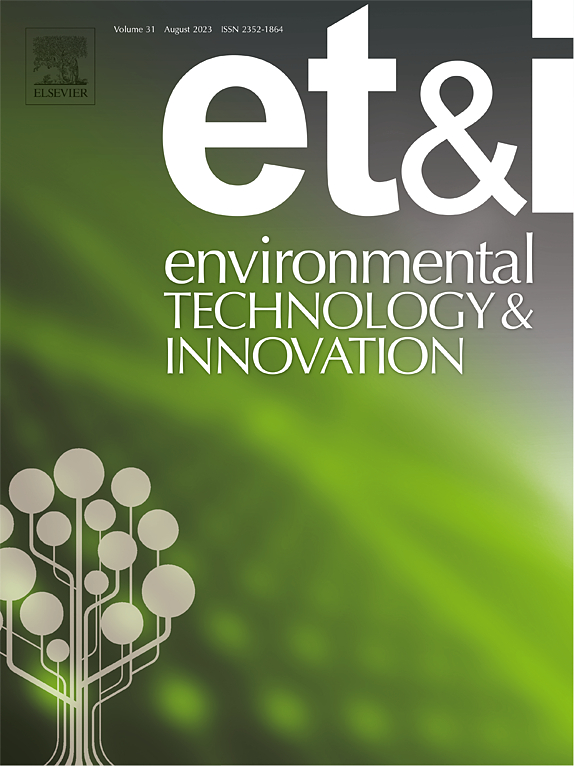Key environmental factors influencing eDNA quantitative detection of golden mussel (Limnoperna fortunei) in a long-distance water diversion project
IF 7.1
2区 环境科学与生态学
Q1 BIOTECHNOLOGY & APPLIED MICROBIOLOGY
引用次数: 0
Abstract
The golden mussel (Limnoperna fortunei) invasion and biofouling has caused huge economic and ecological damage worldwide, notably associated with inter-basin water diversion projects that bridge different biogeographical areas and facilitate dispersal of this species. Use of environmental DNA (eDNA) technology for monitoring golden mussel population has become increasingly prevalent but still restrained because of unclear quantitative relationship between eDNA concentration and densities of golden mussel. This study commenced with field surveys collecting the datasets of eDNA concentration, mussel density, and environmental parameters in the world’s largest water diversion project. An exponential quantitative relationship between the eDNA concentration and density of golden mussel was successfully established. Meanwhile, water temperature and pH were identified as the critical environmental factors influencing this exponential relationship through recursive feature elimination. To further investigate these influences, generalized additive models were developed to capture variations in the quantitative relationship. The confirmation of a quantitative relationship by this study underscores the efficacy of eDNA as a tool for density quantification, paving the way for high efficiency and resolution detection of invasive species like golden mussel, and offering a proactive approach to ecological preservation and resource management.
影响长距离引水工程金贻贝eDNA定量检测的关键环境因素
金贻贝(Limnoperna fortunei)的入侵和生物污染在世界范围内造成了巨大的经济和生态破坏,特别是与跨流域调水工程有关,该工程跨越了不同的生物地理区域,促进了该物种的扩散。环境DNA (environmental DNA, eDNA)技术在金贻贝种群监测中的应用越来越普遍,但由于eDNA浓度与金贻贝密度之间的定量关系尚不明确,因此仍受到限制。本研究从现场调查开始,收集了世界上最大的引水工程中eDNA浓度、贻贝密度和环境参数的数据集。成功地建立了金贻贝eDNA浓度与密度之间的指数定量关系。同时,通过递归特征消去,确定水温和pH是影响该指数关系的关键环境因子。为了进一步研究这些影响,开发了广义加性模型来捕捉定量关系中的变化。本研究证实了eDNA作为密度定量工具的有效性,为金贻贝等入侵物种的高效、高分辨率检测铺平了道路,并为生态保护和资源管理提供了积极的方法。
本文章由计算机程序翻译,如有差异,请以英文原文为准。
求助全文
约1分钟内获得全文
求助全文
来源期刊

Environmental Technology & Innovation
Environmental Science-General Environmental Science
CiteScore
14.00
自引率
4.20%
发文量
435
审稿时长
74 days
期刊介绍:
Environmental Technology & Innovation adopts a challenge-oriented approach to solutions by integrating natural sciences to promote a sustainable future. The journal aims to foster the creation and development of innovative products, technologies, and ideas that enhance the environment, with impacts across soil, air, water, and food in rural and urban areas.
As a platform for disseminating scientific evidence for environmental protection and sustainable development, the journal emphasizes fundamental science, methodologies, tools, techniques, and policy considerations. It emphasizes the importance of science and technology in environmental benefits, including smarter, cleaner technologies for environmental protection, more efficient resource processing methods, and the evidence supporting their effectiveness.
 求助内容:
求助内容: 应助结果提醒方式:
应助结果提醒方式:


